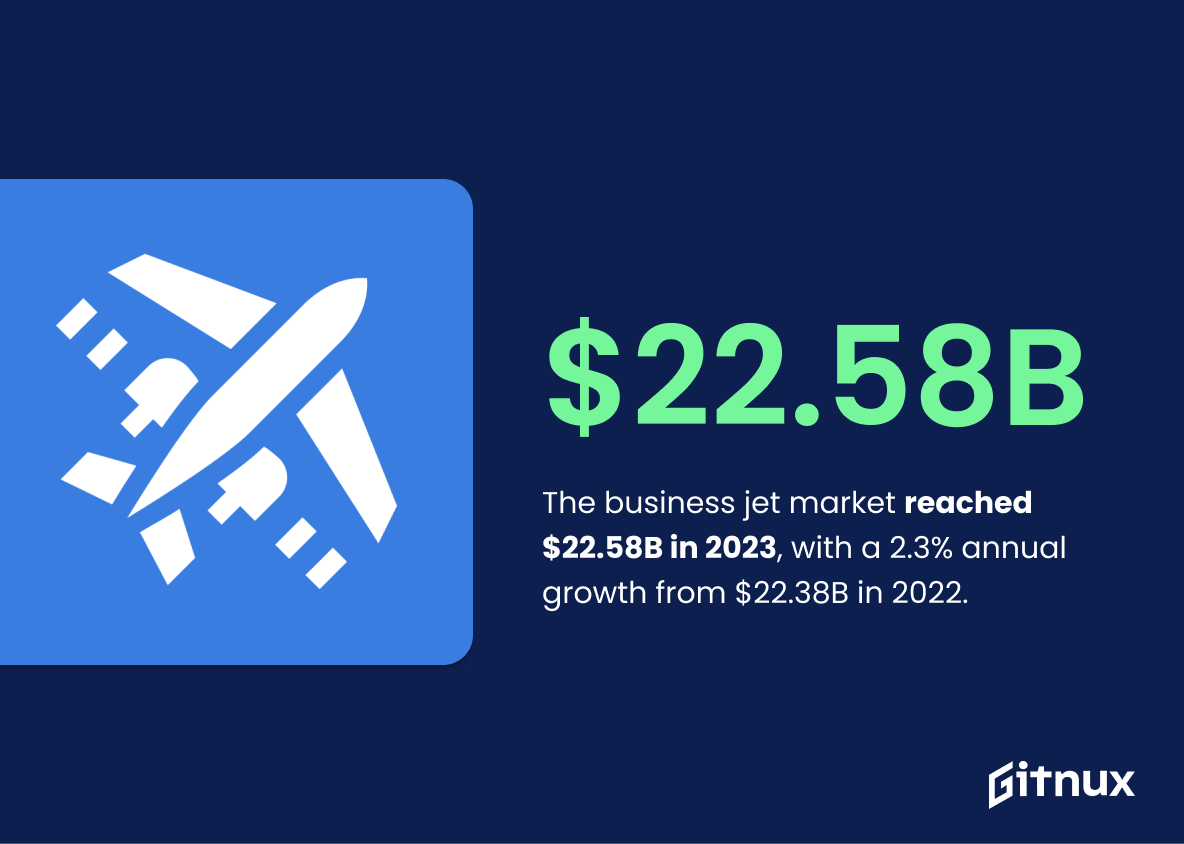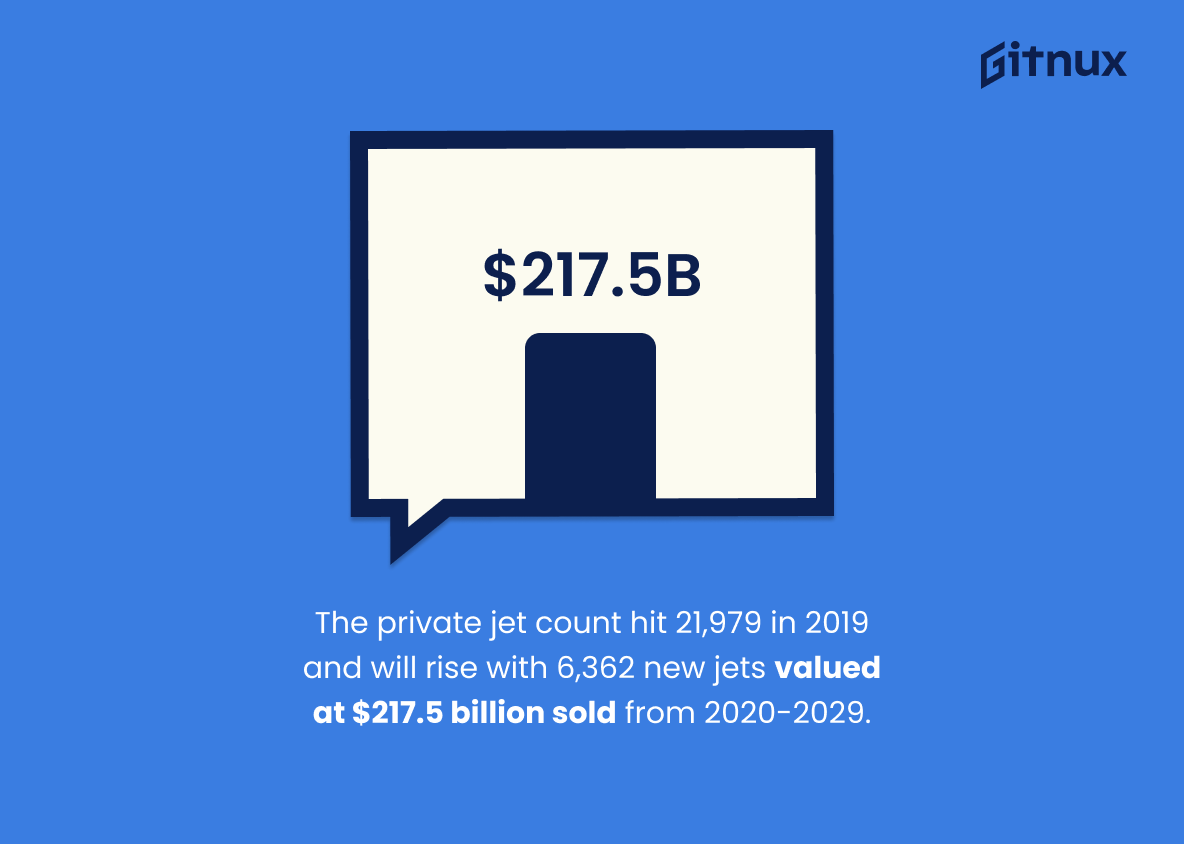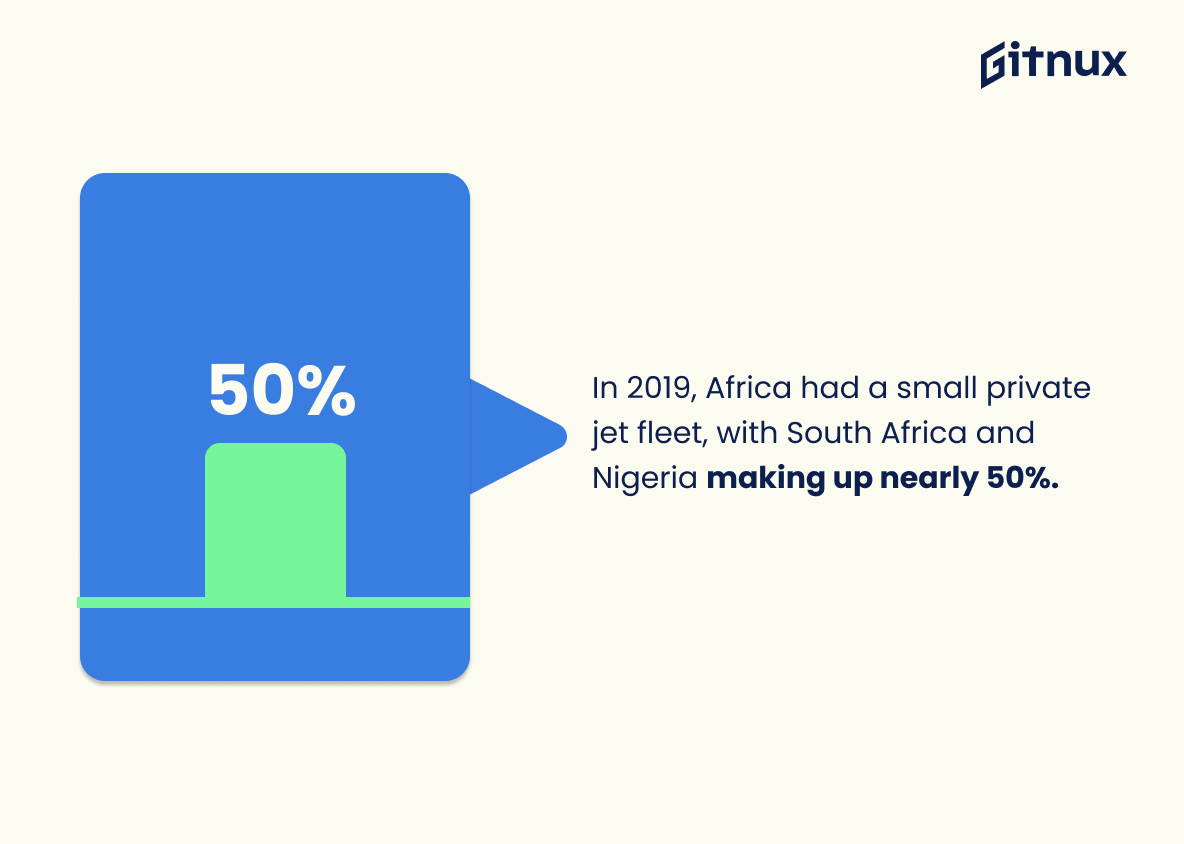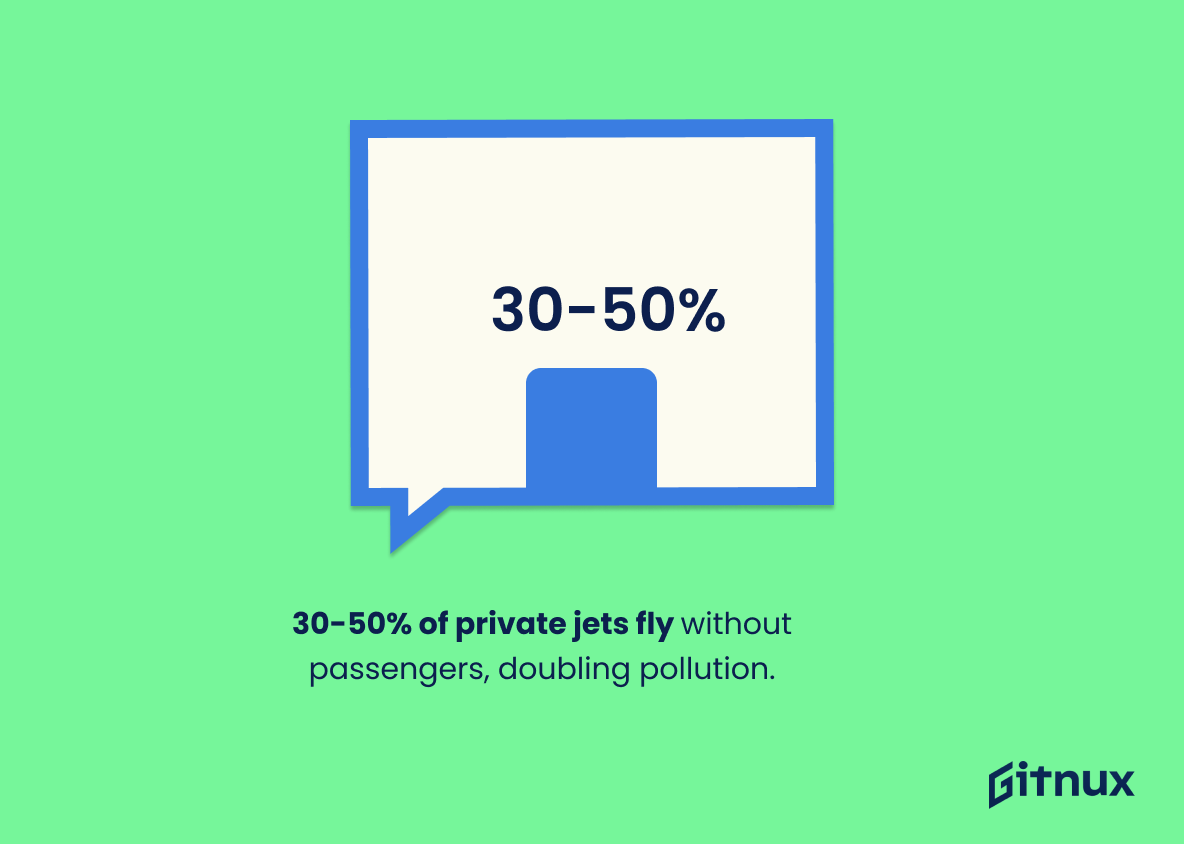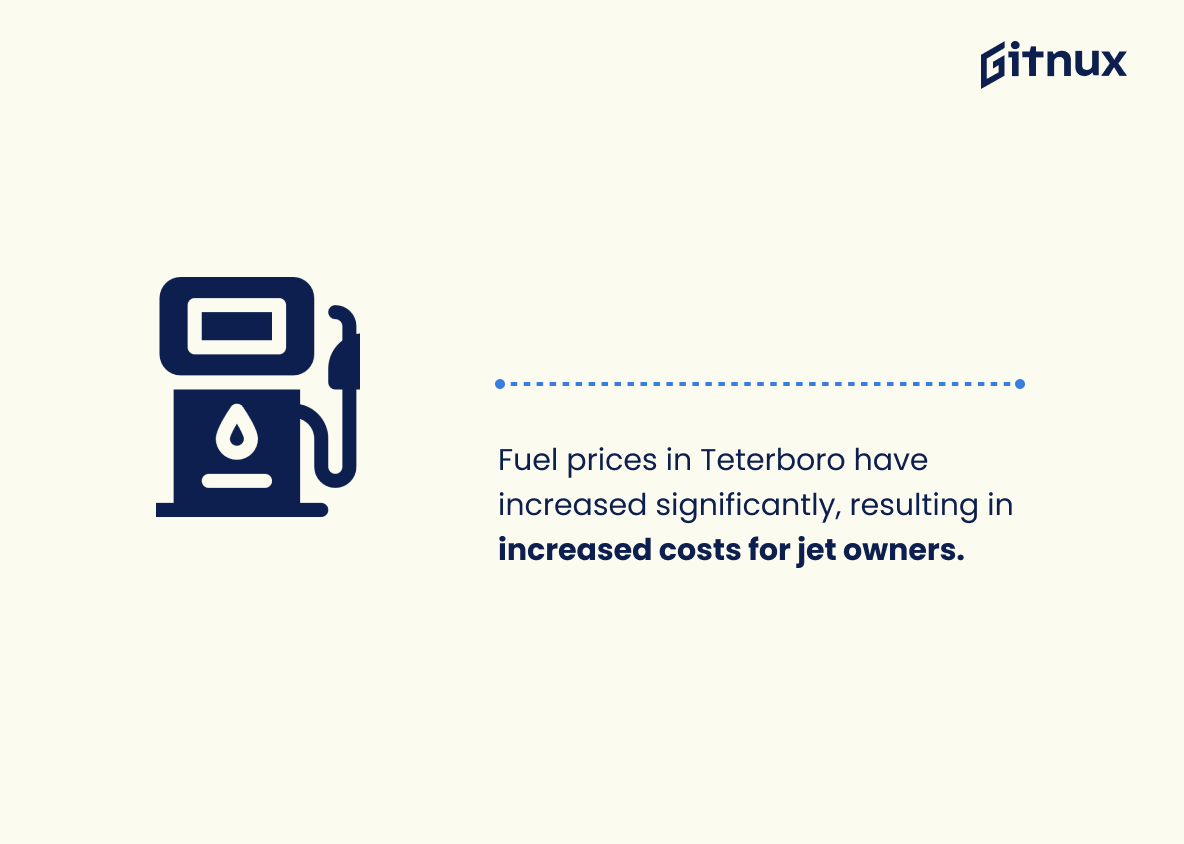The private jet industry is a rapidly growing sector of the aviation industry. With more and more people opting for the convenience and luxury of private jet travel, it’s no surprise that the industry is booming. But what does the data say about the current state of the private jet industry?
In this blog post, we’ll take a look at some of the most interesting private jet industry statistics and what they tell us about the industry today.
Private Jet Industry: The Most Important Statistics
Europe had 2,760 active business jets in 2019, with Germany and France being the major contributors, which highlights the growth of the private jet industry in Europe, and the potential for further growth in the future.
The demand for private jets in the African region has increased significantly in 2021 compared to 2020, resulting in an increase in the number of first time flyers and long distance travels to Europe and the US.
Private Jet Industry Statistics Overview
The business jet market grew from 22.38 billion dollars in 2022 to 22.58 billion in 2023 with an annual growth rate of 2.3%, demonstrating a steady increase in the industry.
Thus, the private jet industry is continuing to grow, indicating that it is a profitable and viable industry. This growth is likely to attract more investors and customers, which could lead to further growth and development.
The number of active private jets has increased to 21,979 in 2019, and is projected to increase further with the sale of 6,362 new jets worth 217.5 billion dollars from 2020-2029.
This shows a significant increase in demand for private jets and is indicative of a growing industry.
Europe had 2,760 active business jets in 2019, with Germany and France being the major contributors, which highlights the growth of the private jet industry in Europe, and the potential for further growth in the future.
Italy has the 7th and 8th most popular business airports in Europe with 63,198 annual departures for private jets, making it a major partner in the private jet industry.
Thus, Italy is a major player in the industry, with two of the most popular airports in Europe for private jet departures.
The African region had the second smallest fleet of private jets in 2019, with South Africa and Nigeria accounting for almost 50% of the fleet.
Africa, therefore, has a smaller market for private jets compared to other regions, and South Africa and Nigeria are the main markets for private jets in the African region.
China has the largest fleet of private jets in Asia with 287 registered jets in 2019, making it the main contributor to the private jet aviation industry in the continent.
This highlights the importance of China in the global aviation industry, which is an important factor to consider when looking at the overall industry.
The demand for private jets in the African region has increased significantly in 2021 compared to 2020, resulting in an increase in the number of first time flyers and long distance travels to Europe and the US.
The demand for private jets in Asia declined from 2016-2019, decreased even more during the pandemic, and has now increased again in Southern Asia.
30-50% of private jets fly without passengers, doubling pollution.
On this, one can see the environmental impact of private jets, which are often seen as a luxury and environmentally irresponsible mode of transportation. It also emphasizes the need for more efficient and sustainable practices in the private jet industry.
Fuel prices in Teterboro have increased significantly, resulting in increased costs for jet owners.
The increased costs associated with operating and maintaining jets could lead to a decrease in the number of jets in operation, as well as an increase in the cost of flying private jets.
Conclusion
The private jet industry is a rapidly growing industry, and it is expected to continue to grow in the coming years. With the increasing demand for private jets, the industry is expected to remain a lucrative business opportunity for many entrepreneurs.
The industry is also expected to benefit from technological advances, such as the development of new aircraft models and the introduction of new services. The private jet industry is a great way to travel in style and comfort, and the industry has a bright future ahead.
References
1 – https://www.thebusinessresearchcompany.com/report/business-jets-global-market-report#:~:text=The%20global%20business%20jets%20market,least%20in%20the%20short%20term.
2 – https://trulyexperiences.com/blog/private-aviation-industry-statistics/
3 – https://www.lunajets.com/en/europe-the-big-5-of-private-aviation
4 – https://trulyexperiences.com/blog/private-aviation-industry-statistics/
5 – https://www.mordorintelligence.com/industry-reports/middle-east-and-africa-business-jet-market
6 – https://www.mordorintelligence.com/industry-reports/asia-pacific-business-jet-market#:~:text=They%20can%20be%20used%20for,%25%20for%20mid%2Dsize%20jets.
7 – https://www.stratosjets.com/blog/private-jet-statistics/#115_How_many_private_jets_are_there_in_Asia
8 – https://www.thelostexecutive.com/2022/05/03/four-problems-that-private-aviation-needs-to-fix-now/
9 – https://privatejetcardcomparisons.com/2022/07/15/whats-next-for-private-aviation-problems-and-questions-abound/
